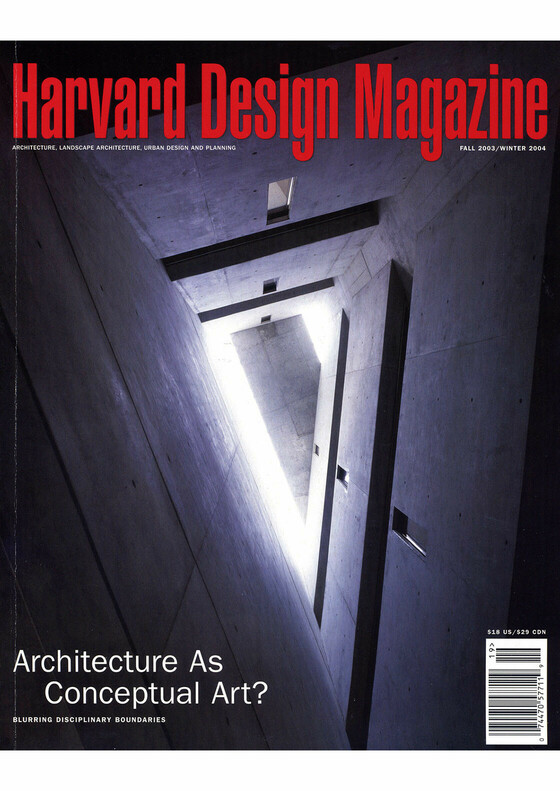Concepts: The Architecture of Hope; On Difficulty and Innovation
19: Architecture as Conceptual Art? Blurring Disciplinary Boundaries

This issue focuses on the most potent and consequential revolution in 20th-century art—conceptual art—and on the architecture that has attempted to replicate it. Advocates of conceptual art—including Nana Last and Sanford Kwinter here—maintain that modern self-consciousness (launched in art most notably by Marcel Duchamp) rules out any simplicity, any innocent suspension of disbelief required by art as it once was experienced in intuitively known and created “worlds.” Some, like critic Arthur Danto, go further, saying that when Andy Warhol reproduced a Brillo Box, art became whatever anyone called art, not something with a special essence.
The conceptualist position, while offering a convincing picture of a new cultural condition—we are doomed and blessed by heightened self-awareness—draws too heavy-handedly, I believe, a picture of intellectual and cultural progress. New brain science is revealing that even as our mental sophistication increases, we remain “hardwired” for primitive, bodily, tacit thoughts and feelings. And many fine architects and artists revel in that fact.
Not only do we remain capable of experiencing “traditional” works of art and architecture as opening up ways of knowing through feeling—Bach’s Cello Suites move us to grief; Durham Cathedral insinuates its sturdy grandeur into our bodily sensations; we share the torment of Michelangelo in his Bound Slave—it is also true that great nonconceptual art and architecture are still made: we experience as irreducibly fecund the creations of many contemporaries —Tadao Ando, Louise Bourgeois, Rafael Moneo, Richard Serra, Alvaro Siza …
The kind of response—aesthetic—we have to the 460 BCE bronze Zeus of Artemisium can (still) be elicited by new art and architecture.
—William S. Saunders (excerpted from the introduction)
Sanford Kwinter
Eric Lum
Nana Last
Mai Ghoussoub
Mark Kingwell
Martin Bechthold
Ellen Dunham-Jones
Alex Krieger
Grahame Shane
Jorge Silvetti
Joseph Rykwert
Sandy Isenstadt
Mardges Bacon
Joseph Rykwert
Sandy Isenstadt
Joseph Rykwert
Daniel Naegele
Tim Culvahouse
Mardges Bacon
Mardges Bacon
Mardges Bacon
Robert Harbison
Joseph Rykwert
Joseph Rykwert
Hilde Heynen
Joseph Rykwert
Michelangelo Sabatino